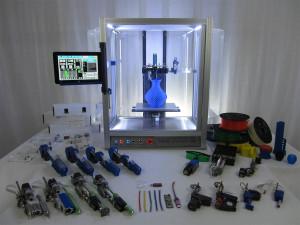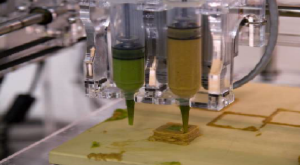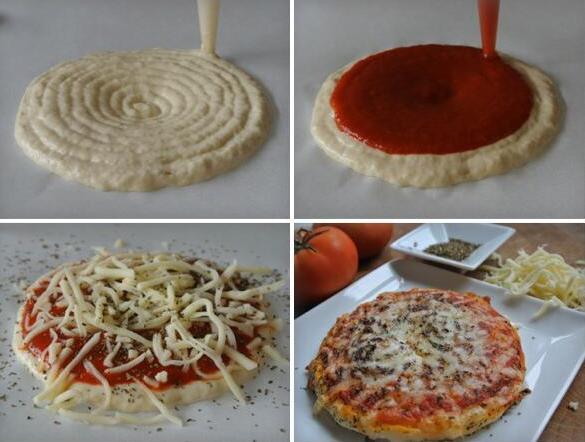
MRE #23 – Chicken Breast filled with rib meat meal includes chicken breast, pineapple pound cake, wheat snack bread, Tabasco sauce, sugar, pretzels, peanut butter as well as a spoon, napkins and other non-food items.
The MRE, or Meal, Ready-to-Eat, is a field ration packaging in an individual, self-contained serving that was developed by the US military to provide nutritious meals to service members while in combat or in other situations where organized food preparation is not possible. While the MRE as the military currently knows it became standard issue back in 1986, the history of portable food for soldiers dates all the way back to the Revolutionary War. Those first military rations consisted primarily of beef, peas or rice, portioned out to soldiers daily. By the time the Civil War came around the military started issuing canned foods that were less perishable, eventually issued self-contained food kits. By World War I the military replaced canned meats with salted or dried meats to reduce weight and allow soldiers to carry more rations with them.
The obvious reasoning behind developing field rations is to maintain the health and strength of military personnel, but the US Army quickly learned that providing basic nutrition simply wasn’t enough. During World War II the military introduced multiple varieties of field rations tailored to the needs of soldiers in specific environments, like a jungle ration or a mountain ration. By the time the first MREs were issued there was a menu of twelve different meals available, which quickly expanded to over twenty four in use today, including vegetarian options. The military is constantly researching and expanding MRE options in order to make sure that they are providing soldiers with meals that will be completely consumed and are large enough to satisfy them completely.
So what exactly can the military expect the future MRE to look like? If researchers from the Army’s Soldier Research, Development, and Engineering Center (NSRDEC) in Natick, Massachusetts have anything to say about it they will be 3D printed meals that have been customized for each soldier. NSRDEC researchers are in the early development stage of new MRE concepts that could change the way the military eats meals. By combining wearable technology capable of measuring a soldier’s individual physiology with food 3D printers, future MREs will be automatically generated meals that have been tailored for the specific nutritional needs of each soldier. While the new MRE is still a few years out, the technology could be ready for deployment as early as 2025.

Hyrel 3D printer can be converted to print with almost anything, including paste and food materials.
It is expected that within the next decade every soldier will be outfitted with wearable devices that monitor and measure their physiology, as well as their nutritional needs. The collected data will be recorded and at designated times transferred back to base camp or to a quickly set up field kitchen outfitted with several food 3D printers. Software would examine the collected data and determine if the soldier is in need of any specific vitamins or nutrients and include them in the meal that will be 3D printed specifically for them. Meals could take any form available based on the pre-existing ingredients that are available and the nutritional values can be altered automatically.
If a soldier has been awake for an extended period of time then the meal could include some additional caffeine, or foods that promote awareness and would help fight fatigue. If the soldier is low on protein then the meal could add extra nutrients to help supplement the loss. With a food 3D printer the limits on what form the foods can take are virtually non-existent. Entire meals could be 3D printed as full meals, portable chocolate protein bars or even as liquid meals that can be consumed quickly and taken into the field. Because a tall, muscular soldier may need more food than a short or thin soldier, the 3D printer would also determine exactly how much food the soldier needs to maintain optimal health and performance. It could even be programmed to 3D print their meal as a pizza.
Current food 3D printing technology is still a ways off from being adapted for use by the military, as the types of food textures and ingredients available are still limited. Today food products like a peanut butter filled protein bar covered in chocolate can be 3D printed in about a half an hour, however the technology is still extremely new and it will become quicker. If there is anything that can be said about the 3D printing industry definitively, it’s that the development of the technology moves extremely fast. Eventually an entire meal could be 3D printed in a matter of minutes, and hopefully for our soldiers it will be worth the wait. Is this a meal you’d like to try one day? Tell us in the 3D Printed Customized Soldier Meals forum over at 3DPB.com.
Subscribe to Our Email Newsletter
Stay up-to-date on all the latest news from the 3D printing industry and receive information and offers from third party vendors.
You May Also Like
Precision at the Microscale: UK Researchers Advance Medical Devices with BMF’s 3D Printing Tech
University of Nottingham researchers are using Boston Micro Fabrication‘s (BMF) 3D printing technology to develop medical devices that improve compatibility with human tissue. Funded by a UK grant, this project...
3D Printing Webinar and Event Roundup: April 21, 2024
It’s another busy week of webinars and events, starting with Hannover Messe in Germany and continuing with Metalcasting Congress, Chinaplas, TechBlick’s Innovation Festival, and more. Stratasys continues its advanced training...
3D Printing Webinar and Event Roundup: March 17, 2024
It’s another busy week of webinars and events, including SALMED 2024 and AM Forum in Berlin. Stratasys continues its in-person training and is offering two webinars, ASTM is holding a...
3D Printed Micro Antenna is 15% Smaller and 6X Lighter
Horizon Microtechnologies has achieved success in creating a high-frequency D-Band horn antenna through micro 3D printing. However, this achievement did not rely solely on 3D printing; it involved a combination...































